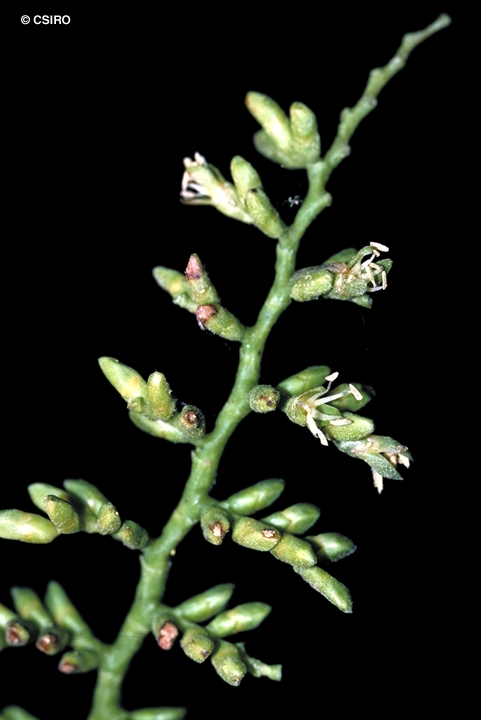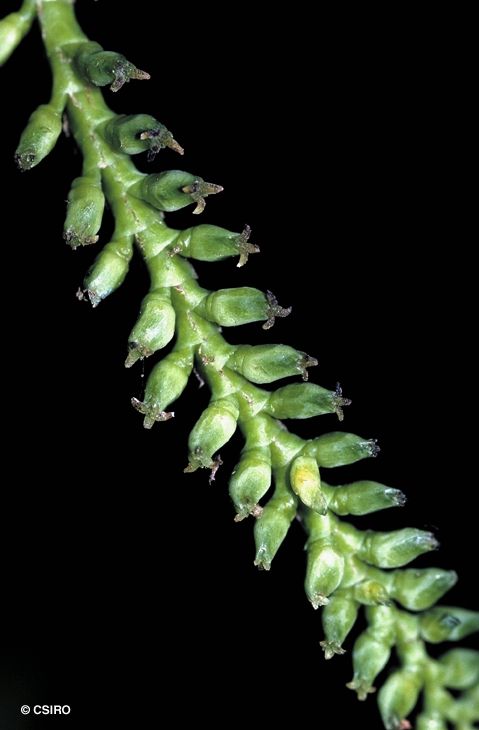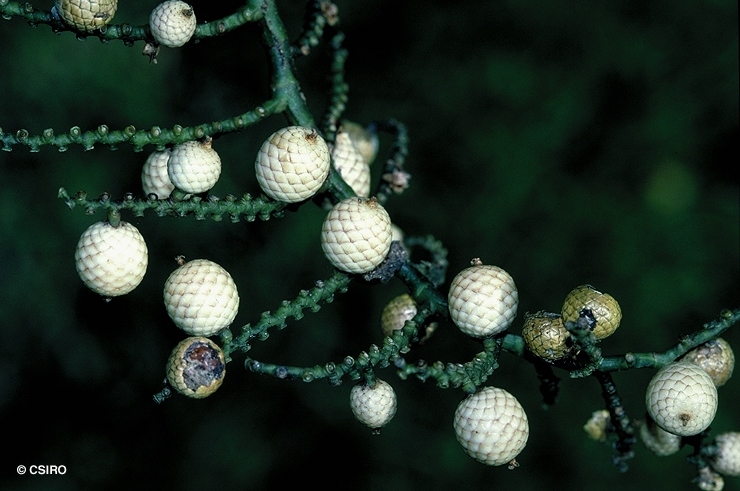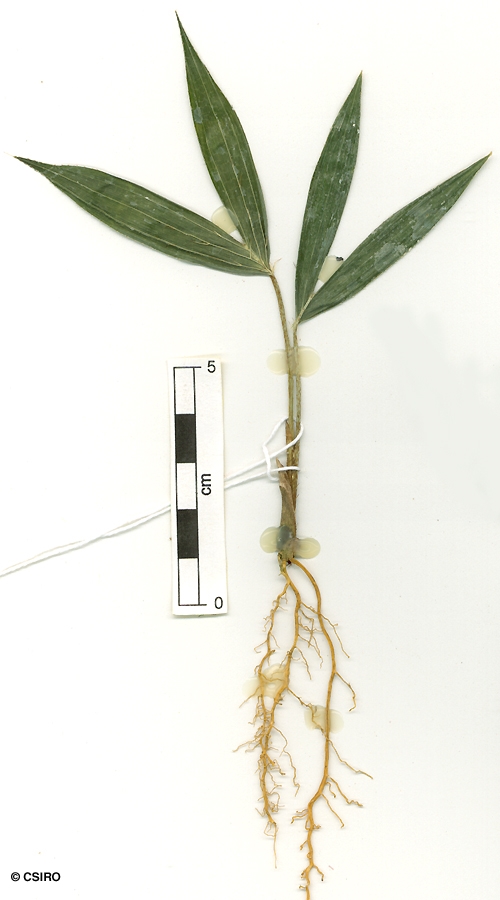Australian Tropical Rainforest Plants - Online edition
Calamus vitiensis Warb. ex Becc.












Beccari O. (1908) Ann. Roy. Bot. Gard. (Calcutta) 11: 350. Type: Fiji, Taveuni, Weber 111; Holo: B; Iso: FI.
Solitary lawyer vine; Dunk Island lawyer vine; Mission Beach wait-a-while
Stems solitary. Vine stem diameter to 3 cm recorded. Vine stem surface smooth and glassy, often glaucous. Adventitious roots produced from the nodes where they are in contact with the ground. Vessels large, visible to the naked eye in stem cross sections.
Leaflets 25-40 in each compound leaf, the compound leaf axis extending beyond the leaflets for about 90-150 cm as an appendage armed with groups (two to six) of recurved spines on the lower surface. Leaflet blades about 13-35 x 2-9 cm, sessile. Venation longitudinal and parallel with up to seven veins and with only five or six cross veins. Leaflets usually arranged in groups of about four along the compound leaf axis. Compound leaf axis clothed in straight spines on both the upper and lower surface towards the base. Sheathing base of the compound leaf petiole densely clothed in flat stiff spines up to 4 cm long, spines sometimes bifid at the apex. Spines tend to be erect on the upper half but appressed to the sheath on the lower half. Straight spines may be present on the underside of the leaflet blade towards the base.
Male flowers: Inflorescence a panicle of spikes. Outer tepals green, cup-shaped, 3-lobed, about 2 mm long, resembling a calyx. Inner tepals about 2 mm long, petaloid. Staminal filaments about 2 mm long, the apical part curved, attenuate and spring-like. Ovary rudimentary, non-functional, styles 3, each about 0.4 mm long and produced in a narrow cavity with a minute orifice. Female flowers: Inflorescence a raceme of spikes. Flowers paired, the smaller flower of each pair being a sterile male and caducous. Female flowers about 1.8 mm diam. Outer tepals slightly larger than the inner. Outer tepals fused to form a tube about 2.2 mm long, lobes about 0.5 mm long. Staminodes 6, fused to form a tube. Ovary clothed in overlapping, shingle-like scales. Ovules 3 per ovary.
Infructescence large, individual fruits shortly stalked, arranged in racemes. Fruits globular, about 7-10 mm diam., apex apiculate. Surface clothed in cream diamond-shaped overlapping scales. Style and stigma remnants persistent at the apex, calyx remnants persistent at the base. Seeds flattened, depressed globular, about 6-8 mm diam., quite hard to cut. Testa surface rugose, cerebriform. Embryo about 1 mm long, conical to pyriform, contained in a cavity connected to the outside of the seed.
Two short, broad cataphylls produced initially just above the seed and then a third much larger stem-sheathing cataphyll before the first true leaf. First true leaf V-shaped consisting of two sessile leaflets. Leaflet blades sparsely spiny on the upper surface mainly along the midrib and at the apex of the petiole. Spines present at the base of the petiole and on the stem. At the tenth leaf stage: leaf pinnate with about 5 or 6 leaflets in all. Leaflets sub-opposite, sessile, mainly glabrous except for a few spines (4-5 mm long) on both the upper and lower surface near the base. Petiole and compound leaf axis armed with spines (5 mm long) on the upper surface. Leaflet blade margins finely toothed or spiny. Venation longitudinal and parallel. Terminal leaflet deeply bilobed. Leaf base spiny and clasps the stem.
Occurs in CYP and NEQ. Altitudinal range from near sea level to 150 m. Grows in well developed lowland rain forest, monsoon forest and gallery forest. Also occurs in New Guinea and other areas of Malesia.
Distinguishing features: leaf terminating in a cirrus (whip-like extension armed with spines); stems solitary.





